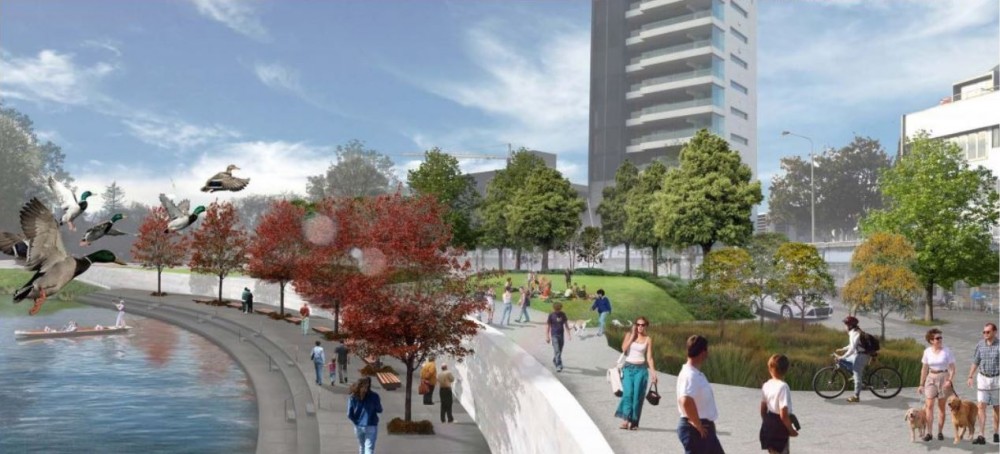It strikes me that the terms of reference for the CERA earthquake memorial project almost entirely miss the point.
http://cera.govt.nz/news/2014/site-confirmed-for-canterbury-earthquake-memorial-12-july-2014
Why are we limiting proposals to the location selected?
The riverside site represents a number of quite profound social and architectural deficiencies and lost opportunities for any disaster memorial of international stature.
The worst is that the result will be tidied safely away from the psychic ‘epicentre’ of the event, and away from day to day street life. Very much robbed of any visceral power it might otherwise have if integrated into the urban fabric of the new CBD.
Hiroshima while rebuilding managed to preserve a poignant ruin of a whole building in the middle of what was left of their city, and Pompeii, by preserving many entire streets of buildings has huge resonance for visitors today.
Why would the organisers of this event conclude that for a memorial installation commemorating the earthquakes that effectively obliterated our city, with the profound rift and disconnect between our past and future built environments that this loss represents, that it would be inappropriate to preserve at least some of the ruined fabric from the old CBD? Would this really be too confronting or difficult for the people of Christchurch to achieve?
Why can we not preserve even a whole streetscape in it’s ruined state – for example the remaining portion of High Street (for which redevelopment is not likely soon anyway)? This would bring home the raw impact of the event to our descendants and visitors in a way that no secluded memorial sculpture can capture, and will represent a significant and dramatic tourist attraction to offset the draw of the heritage fabric we have lost.
This part of town, in its ruined state, now possesses extraordinary architectural richness, power and value – a state we are never likely to recapture deliberately.
We have urban fabric here with hard earned ‘patina’ that would otherwise take perhaps a thousand years of hard living to replicate. How is it that for such a young country we do not see the value and importance of this resource?
Beyond preserving this street scape, surely we should be endeavouring to capture and preserve ruined walls, foundations and other artifacts right around the CBD, and integrating these into our new built fabric in any number of ways? Expanses of ruptured and buckled paving left as is; small alleyways between shattered brick walls embedded in modern concrete as a retreat from the day to day hubbub of 22nd century street life , perhaps leading past some poignant spot (perhaps with poetry); Old foundations visible through the surface of new paved plazas; ruined columns framing small green spaces where office workers can eat their lunches; old damaged facades facing new buildings …
Perhaps a sense of overwhelm is behind the current desire to sanitize, and why we are so apparently unconcerned with preserving visceral traces of the event? Or is it just oblivious insensitivity to the extraordinary yet rapidly vanishing resource and opportunity we now have?
The desire expressed by many to ‘move on’ from disaster is restricted to the current generation only – our children and their descendants will very much regret the loss of this tangible and rich patina that could otherwise enliven and inform their built environment.


